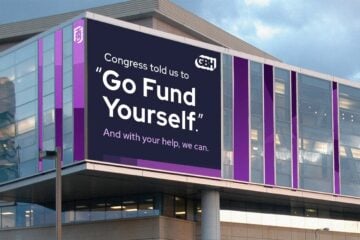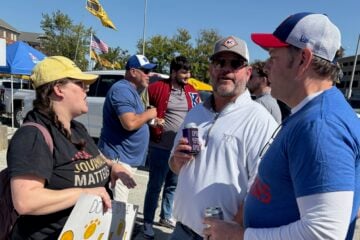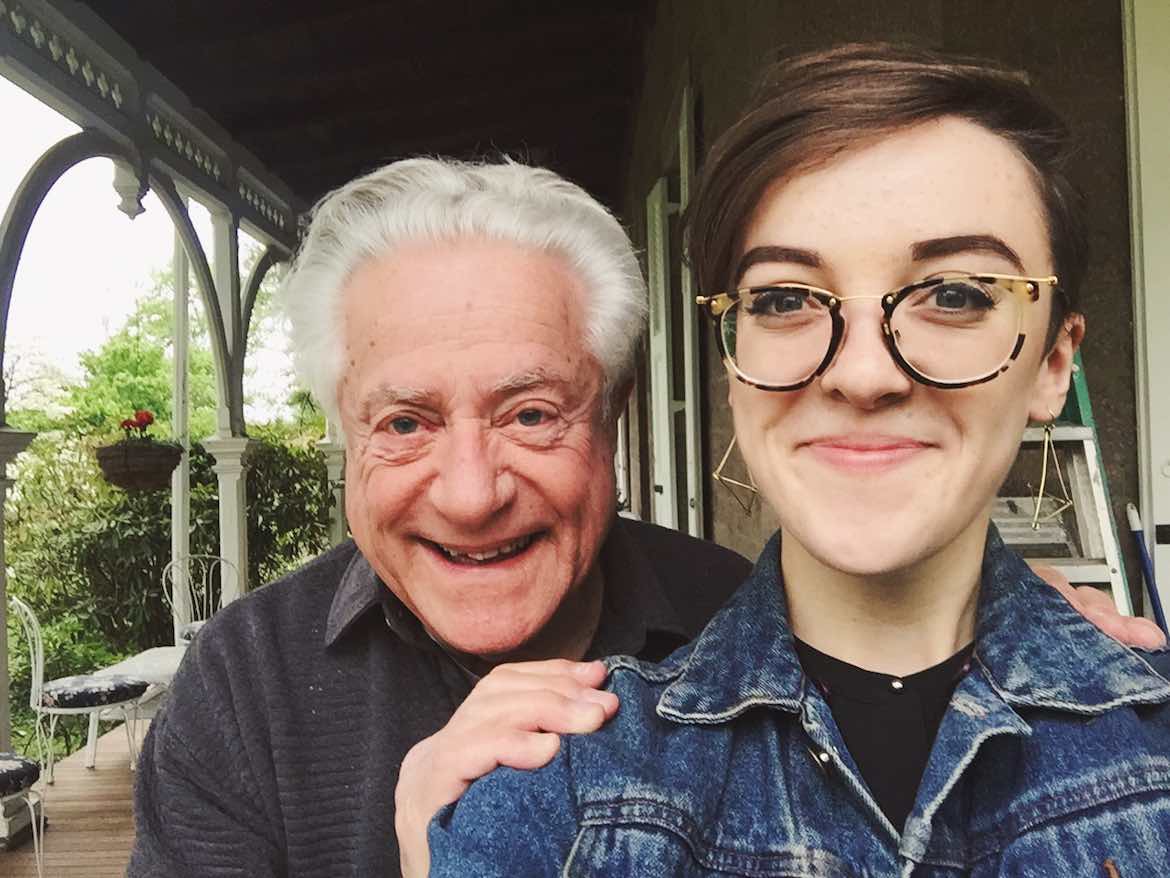Sleepless in Seattle: Marathon KEXP broadcast raises awareness about threat to federal funding
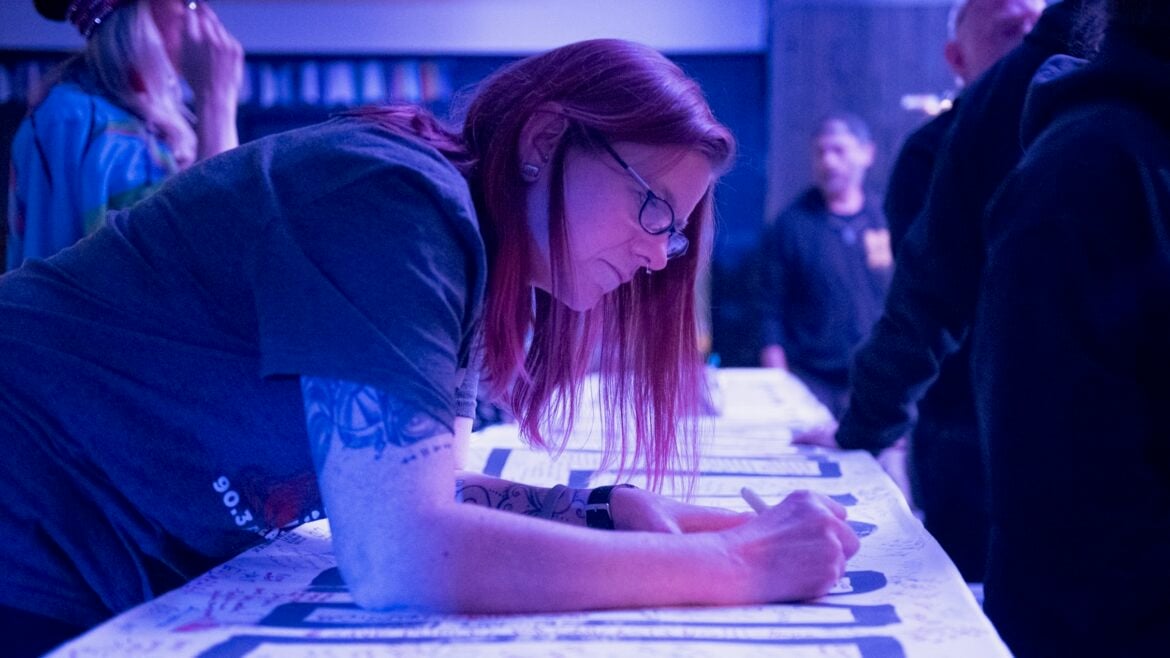
Morgen Schuler / KEXP
A listener signs a banner reading “I STAND WITH PUBLIC MEDIA” in KEXP's gathering space. The banner was created and donated by listener and volunteer Drew Wicklund.
John Richards, host of The Morning Show on Seattle’s KEXP, was still on the air June 12 when the House passed the rescission package that includes $1.1 billion in clawbacks to CPB funds. It was nearly 1 p.m. Pacific time, and on any other day, he would’ve been off the air three hours prior.
But that afternoon, Richards, alongside fellow host Morgan Chosnyk and producer Owen Murphy, was just short of six hours into a 27-hour marathon broadcast aimed at bringing attention to potential federal cuts to public media funding.
The timing of the broadcast was planned a couple of days beforehand. The timing of the rescission vote was not. Richards told Current it was “the worst and best timing I’ve ever seen.”
“I was absolutely shocked that it was all happening all at once,” he said. “And so it was like a perfect storm, but an awful perfect storm all at once.”
The marathon required help from staff across KEXP, everyone from engineers who kept the lights on to the station’s CEO, who joined a crowd of supporters at an all-night event in the station’s public gathering space. The show of support from listeners — both online and from those who came out in person — showcased the kind of community public media can create and that Richards and his colleagues were defending.
As the threat of funding cuts became increasingly dire over the past few months, Richards and Chosnyk floated the idea of the marathon. They ultimately decided to schedule it as a lead-in to a one-day fundraising drive planned for June 13.
They began the broadcast with Richards’ three-hour, 7 a.m. morning show June 12 and continued through another round of his show, ending at 10 a.m. the following day. Throughout that time, they urged listeners to call their lawmakers to share why public media was important to them and to check out Protect My Public Media, an organization that advocates for federal funding for the system.
The broadcast capped off the final day of a weeklong pre-drive that featured fewer fundraising breaks than the June 13 drive. From the start of Richards’ usual slot at 7 a.m. June 12 until 6 a.m. the next day, he and Chosnyk focused their breaks on discussing the threats to public media with “minimal asks” for donations to KEXP, according to Director of Marketing and Communications Dashel Schueler.
During the last day of pre-drive, which included 23 hours of the marathon, KEXP raised nearly $100,000, more than 10 times what it had raised on the last day of the pre-drive in previous years. The station shifted to its full-on one-day drive for the marathon’s final four hours on June 13, during which it raised about $280,000, more than double its expectations, according to Schueler.
Altogether, KEXP raised over $550,000 during the pre-drive, marathon and one-day drive. Other stations have also found that addressing the threat to federal funding has translated into more donations.
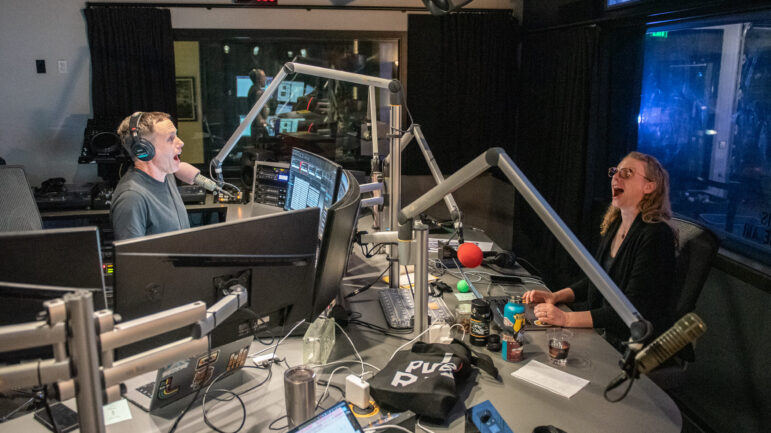
Impacts of potential CPB cuts
Richards and Schueler both said KEXP is poised to survive a CPB funding cut relatively well but that it wanted to speak up for smaller stations that would be devastated by a reduction of support.
If KEXP could help those stations, “maybe they can become the next KEXP,” Richards said. “Maybe they can rise out of this and be successful and do what we did.”
KEXP receives only about $700,000 from CPB each year, amounting to 4-5% of its annual budget. But Schueler said a cut would still impact the station’s ability to carry out its mission.
“We’re gaming out different scenarios and moving forward cautiously, with the knowledge that we may have to make some difficult cuts,” he wrote in an email to Current. “… We’re also thinking a lot about how we can engage in fundraising that results in even more durable, long-term support.”
The scene at KEXP
The grim news of the rescission vote didn’t stop the party at KEXP. Richards said the station’s public gathering space stayed busy all night, with dozens of listeners turning out. KEXP CEO Ethan Raup and DJs also joined in, and the space’s coffee shop stayed open all night.
“People wanted to be a part of this,” Richards said. “People want to be a part of something that brings you hope and brings you some joy right now.”
Keeping the space open was not easy. The Seattle Center, the building that houses KEXP’s studios, was scheduled for a power outage. KEXP’s studios had backup generators already, but station engineers had to improvise and hook up generators to light the gathering space and power the coffee shop.
“I almost am overjoyed that this happened, because it showed what we could do as a staff and as a community when everything seemed impossible,” Richards said. “They kept the lights on. They literally kept the lights on and kept the coffee flowing. If that’s not the most Seattle, KEXP thing to ever happen, I don’t know what is.”
A few staffers at more vulnerable stations, including WMMT in Whitesburg, Ky., called in to talk about what was at stake for their organizations. In the gathering space, KEXP supporters gave on-air interviews about why they valued public broadcasting.
Late into the night, as listeners signed messages of support on a banner reading “I STAND WITH PUBLIC MEDIA,” messages of support poured in from listeners in Europe and then the eastern U.S. who were beginning their mornings.
Richards, who programmed 24 of the 27 hours, managed to repeat only one song. He also repeated his usual message, “You’re not alone,” which felt even more true that night.
“My entire life on the radio over nearly three decades, I have never felt less alone,” Richards said. “It was the most community-focused and responded-to thing I have ever experienced, and I’m extremely emotional about how much people believed in what we were doing and, in turn, believed that there is some hope.”


